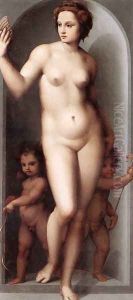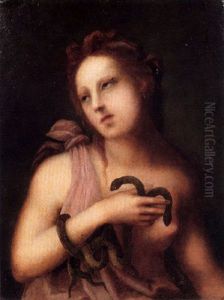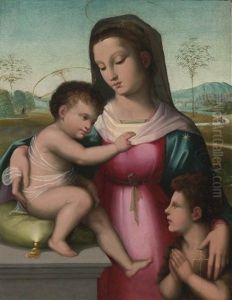Andrea del Brescianino Paintings
Andrea del Brescianino, also known as Andrea Piccinelli, was an Italian painter of the Renaissance period, born in 1486 in Brescia, a city in the Lombardy region of Italy, which is reflected in his nickname 'del Brescianino', denoting his origin. However, much of his artistic life and work were centered in the city of Siena in Tuscany. He is often confused or associated with his brother Raffaello del Brescianino, with whom he frequently collaborated, leading to difficulties in attributing specific works to each brother individually.
Andrea del Brescianino's work is characterized by its incorporation of the High Renaissance ideals of beauty, harmony, and perspective. He was influenced by other Renaissance masters such as Raphael and Leonardo da Vinci, which is evident in his refined use of color and delicate portrayal of the human figure. His religious paintings, which include altarpieces and frescoes, are particularly noted for their grace and devotional intensity.
Despite the challenges in distinguishing his individual contributions from those of his brother or their workshop, Andrea is credited with several significant works in Siena and its surroundings. His contributions to the Sienese school of painting, particularly in the early 16th century, helped to bring the ideals of the High Renaissance to the region. Among his known works are frescoes in the Siena Baptistery and several altarpieces in local churches, which are celebrated for their elegance and clarity of composition.
Andrea del Brescianino's death in 1525 marked the end of a career that significantly contributed to the cultural and artistic heritage of Siena. His works continue to be studied and admired for their beauty and for the role they played in the dissemination of Renaissance ideals in Tuscany. Despite the overshadowing presence of more prominent Renaissance figures, Andrea del Brescianino remains an important artist whose contributions to Italian art history are undeniable.


















